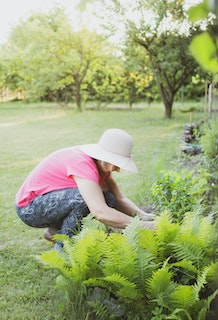
Master George Xu engaging with students in a workshop. He has lessons on Patreon.com, Students of Masters George Xu and Wu Jie
Many long-time practitioners learn more than one form of taijiquan if they practice long enough—Yang, Wu, Chen, Wu Hao and so on. Many learn more than one form of martial art, as well—Xingyiquan, Taijiquan, Baguazhang, and so on. They also learn many weapons and associated forms—sword, staff, etc. They probably all learn some form of qigong, too. All of which suggests that they also have many teachers in their lifetimes. Each style of training enhances each one of the others and all really merge into a dedicated, lifelong practice.
I have had three core teachers: my taijiquan teachers, George Xu (Guo Ming), Susan A. Matthews, and lan shou master, Wu Jie, who lives in Shanghai. But I have learned from many more during 20+ years of seeking diverse opportunities.
Tim Dymond, a friend and fellow student, moderates a Patreon site (Students of Masters George Xu & Wu Jie) in which you can learn Chen, Xingyi and Lanshou with three different masters of each art. GM George Xu, with whom Tim launched the site, adds very distinct lessons to the site regarding basic martial awareness and technique according to his predator theory which informs any art you practice.

Lan Shou Master Wu Jie teaches video lessons on Patreon’s Students of Masters George Xu and Wu Jie.
Lan Shou Men Master Wu Jie is a systematic and precise teacher of Cao Quan and Fan Quan form. His teaching style is kindly and efficient, and detailed—from method to application.

The latest addition to the Patreon group is Master Qian Shi Ying (Nelson), the son of Qian Zhao Hong, the great 10 Animal Xing Yi master from Shanghai. Nelson has been building his teaching credentials since his father passed away a few years ago.
The video production values are good. Master Xu’s lessons go from about 20 to about 50 minutes long. Master Wu’s lessons, each of which are usually about 10 minutes long, come with English subtitles, but lately Bob Lau has added English audio translations to the instruction. Nelson Qian speaks English, which makes his info more available. You can also sign up for a What’s App discussion group with other patron’s. Plus, you can engage directly with Master Wu on WeChat if you are able to get signed in.

Many students of these arts nowadays don’t have the extra luxury of growing up in China surrounded by martial arts communities. We begin learning later in life and the time we devote to them is limited. Having an opportunity to learn by video on demand can add immensely to help focus your energies more efficiently and successfully. If you sign up on the Patreon site, say hello to Tim for me.

You must be logged in to post a comment.